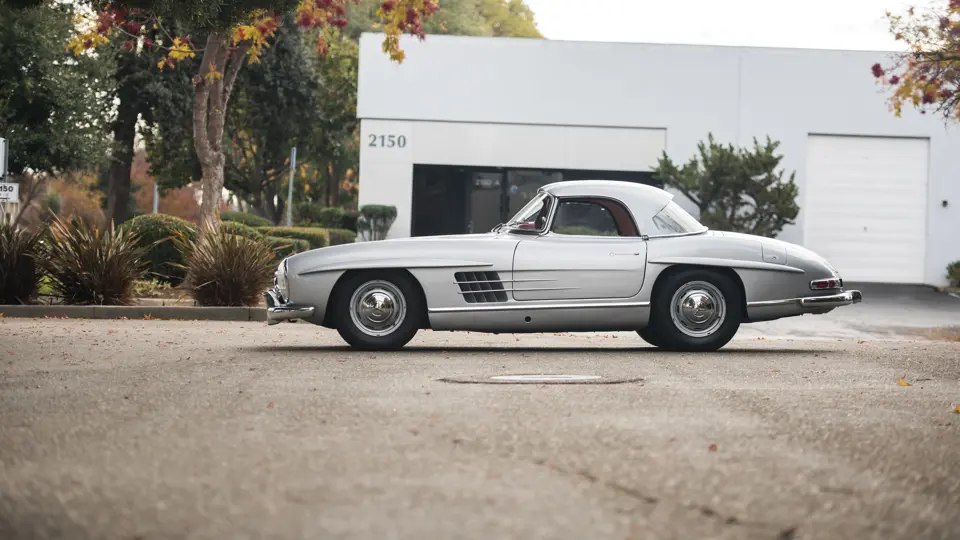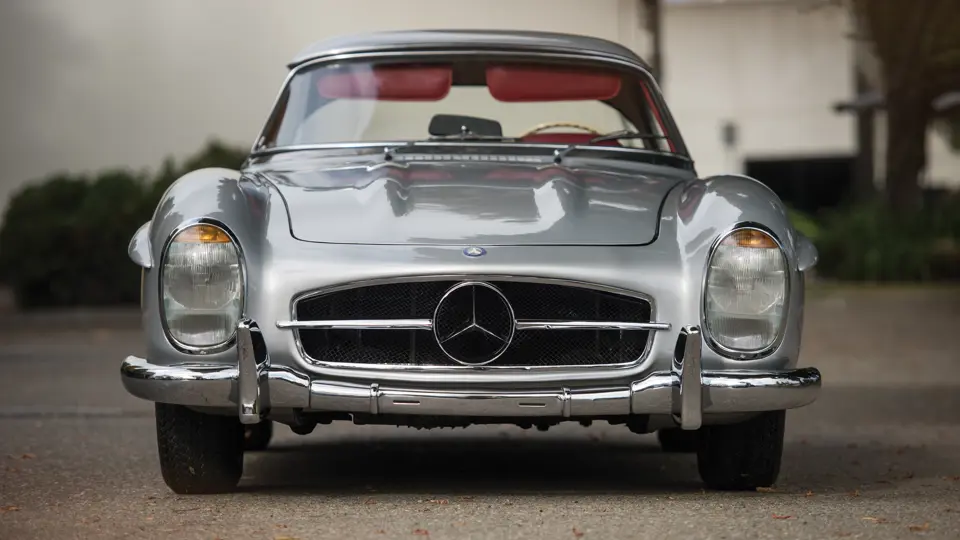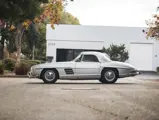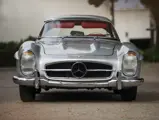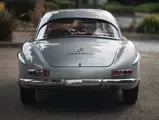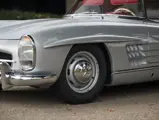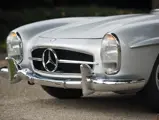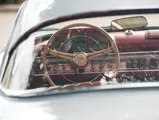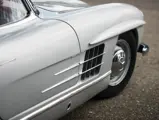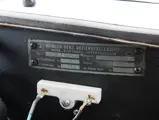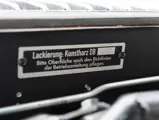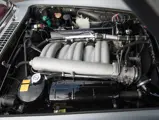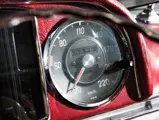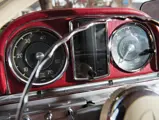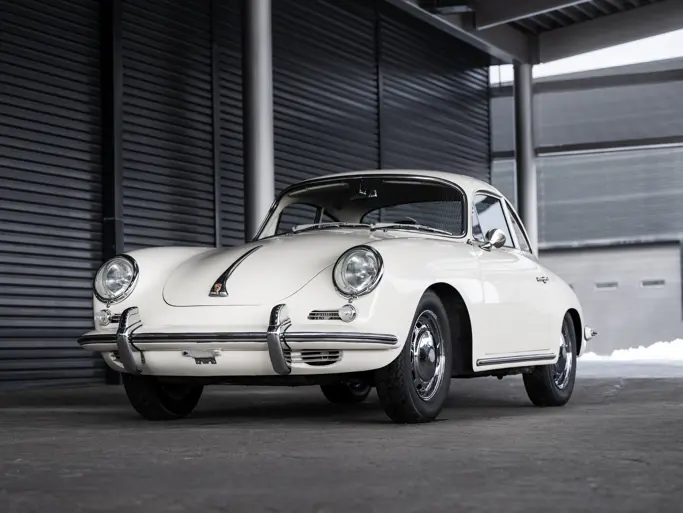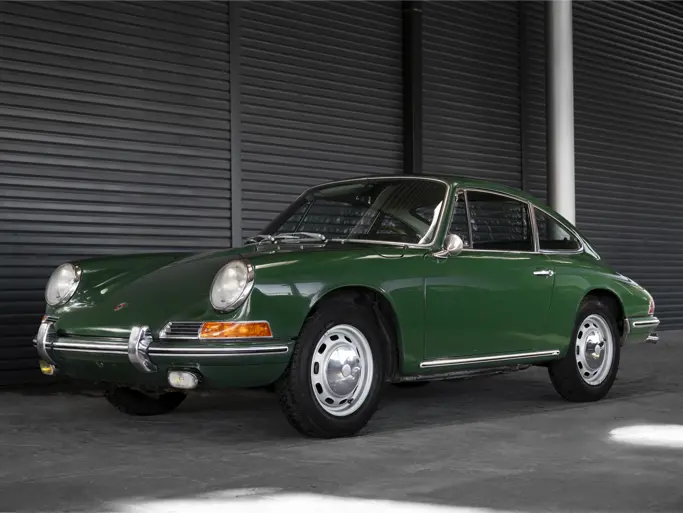215 bhp (DIN), 240 hp (SAE), 2,996 cc overhead-camshaft inline six-cylinder engine, four-speed manual transmission, coil-spring independent front suspension and coil-spring single-point swing-axle rear suspension, and servo-assisted four-wheel drum brakes. Wheelbase: 94.5 in.
It goes without saying that Mercedes-Benz’s 300 SL was a hugely important automobile. It started as the brainchild of American Mercedes-Benz importer Max Hoffman, who was convinced that a road-legal version of the successful W194 racer would be profitable in the United States and that his clients would beg for the chance to own an automobile with such brilliant performance and styling.
After lobbying the top brass at Mercedes-Benz to develop such a car, Hoffman’s wish was granted, and the car that resulted exceeded even his wildest dreams. The 300 SL utilized a chassis that had been developed from lessons learned in racing, and it was the first production automobile to use fuel injection as opposed to carburation, which was a technological advancement that allowed it to become the fastest street-legal car of its day. The public fell in love with its styling at the 1954 New York Auto Show where it premiered, and they were mesmerized by its use of roof-hinged “gullwing” doors. The car became such a design icon that it would even catch the eye of Andy Warhol in 1986, who featured it in a painting entitled Cars, which was commissioned by German art dealer Hans Meyer.
Hoffman, not keen on settling with a closed version of the 300 SL, also desired a convertible variant of the world’s most desirable sports car, and the roadster was introduced in short order in 1957. Since the 300 SL would lose its top, engineers reinforced and modified the space-frame chassis to fit conventionally hinged doors, which simultaneously allowed for greater ease of entry by lowering the height of the chassis at the door line. At the same time, the design team also made a handful of slight changes to the 300 SL’s body, including a smaller grille opening and dual chrome strips on the side sills, which gave the car a more streamlined and glamorous look.
Of course, Mercedes-Benz would not allow performance to be compromised due to the 300 SL’s lack of a roof, and all roadsters were offered with the more sporting NSL engine of the coupe as standard equipment. This made the roadster capable of top speeds that ranged from 133 to 155 mph, depending on the final drive ratio specified.
CHASSIS NUMBER 198.042.7500128
The 300 SL Roadster offered here is an early-production model, hailing from the beginning of the 1957 production run. It is equipped with some of the most desirable features of this model, such as a body-color removable hardtop (with soft-top delete) and the European-specification headlights, which are widely considered more attractive than the sealed-beam units used on U.S.-delivery cars.
The car is an older cosmetic restoration, with the body finished in Silver (DB) with a beautiful Red leather interior. Consistent in its presentation, it shows only minor age and use throughout, with the interior showing wear from driving that appears charming rather than as a detriment; similarly, the steering wheel appears to have worn many pairs of hands. It displayed 66,353 miles at the time of cataloguing. Under the hood is consistently gently patinated. The engine is stamped with the proper engine number but is missing the original number plate, while the serial number plate on the firewall appears original, as do the chassis number stamping and plate. The owner notes that the engine was rebuilt by his professional in-house mechanic to factory specification within the last several years.
A nice driver that would be entertaining for Arizona desert roads, this beautiful early 300 SL Roadster would be a happy addition to any collection of sporting automobiles.

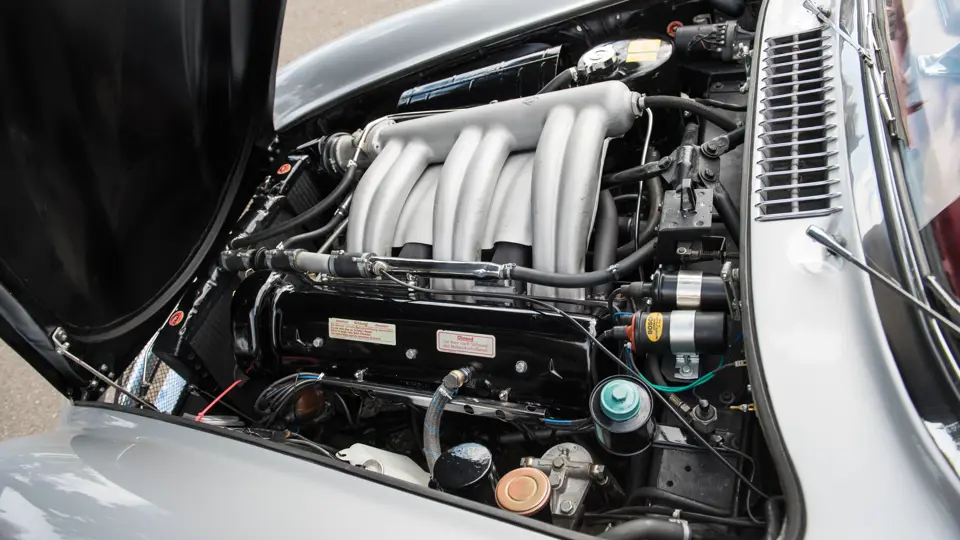


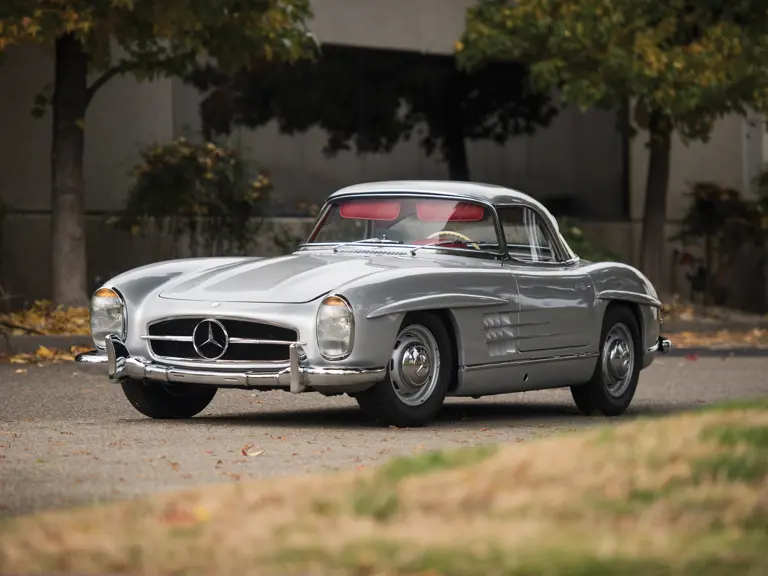
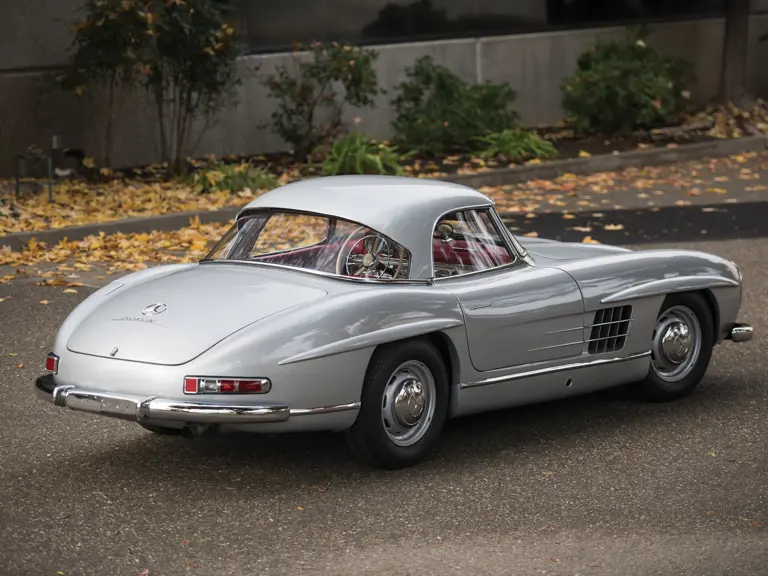
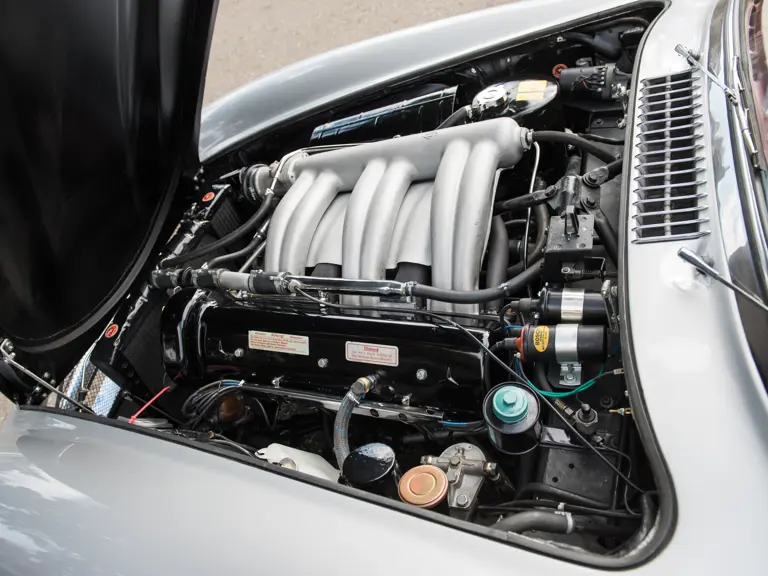
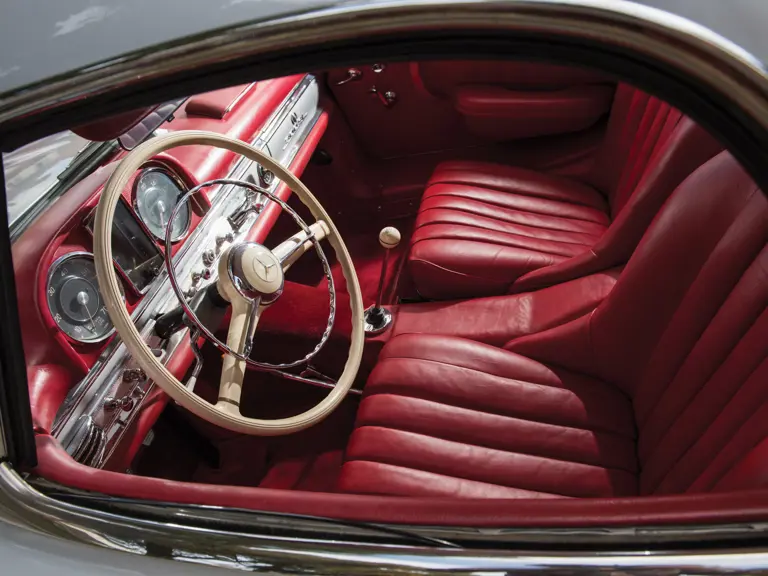
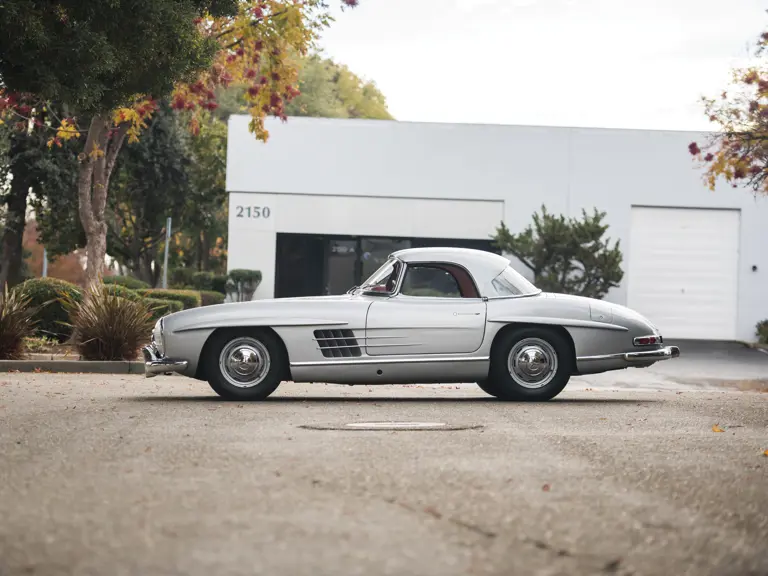
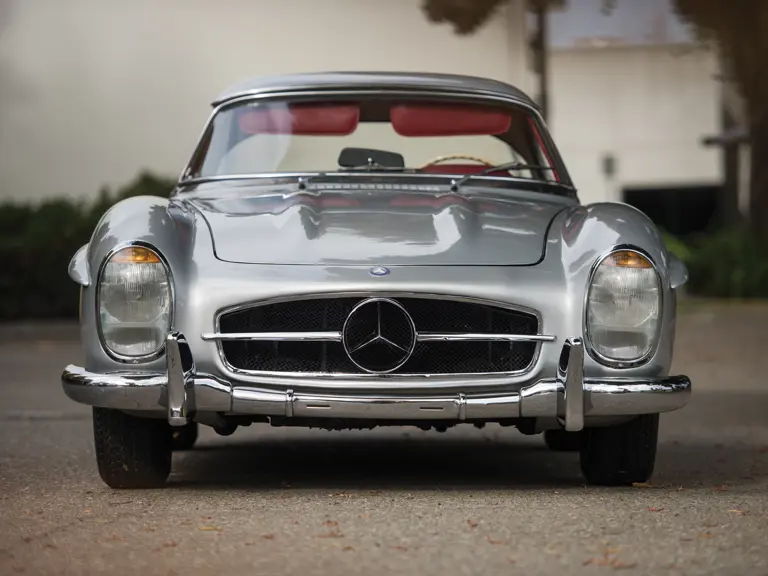
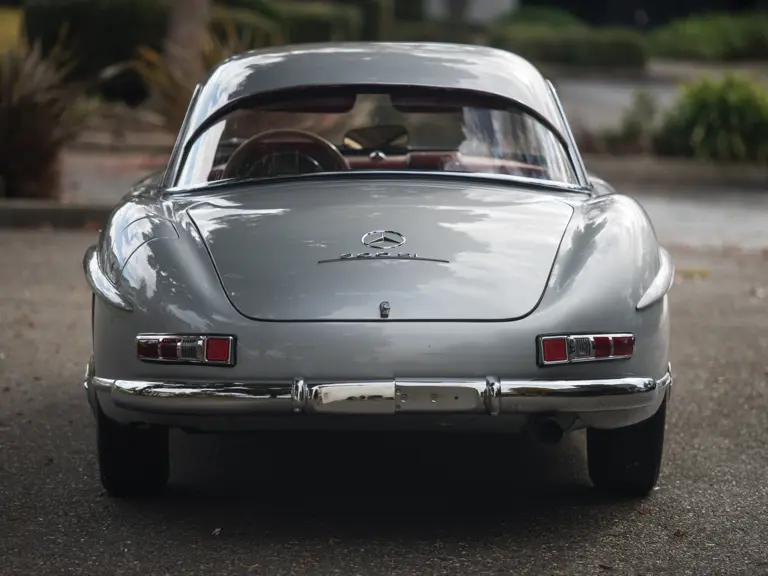

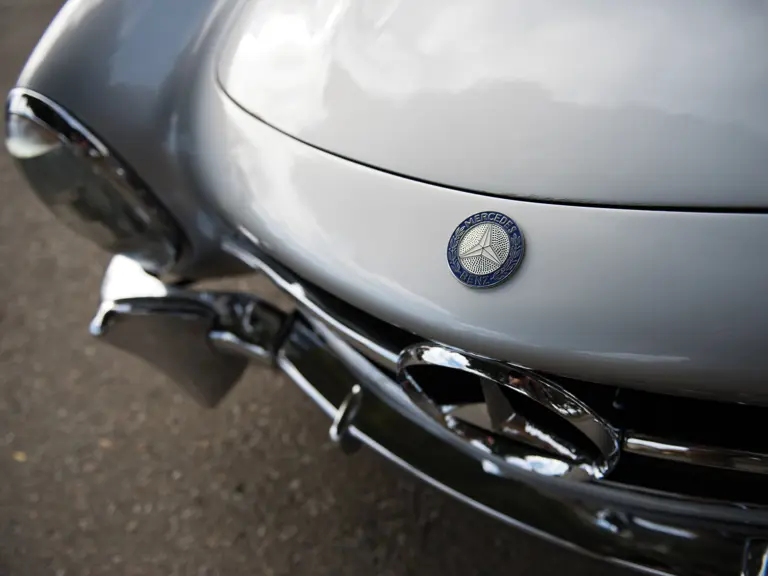
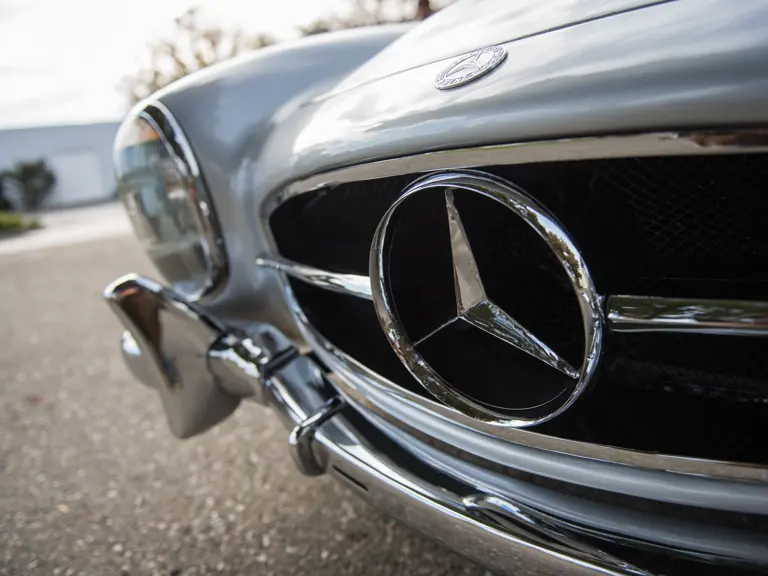
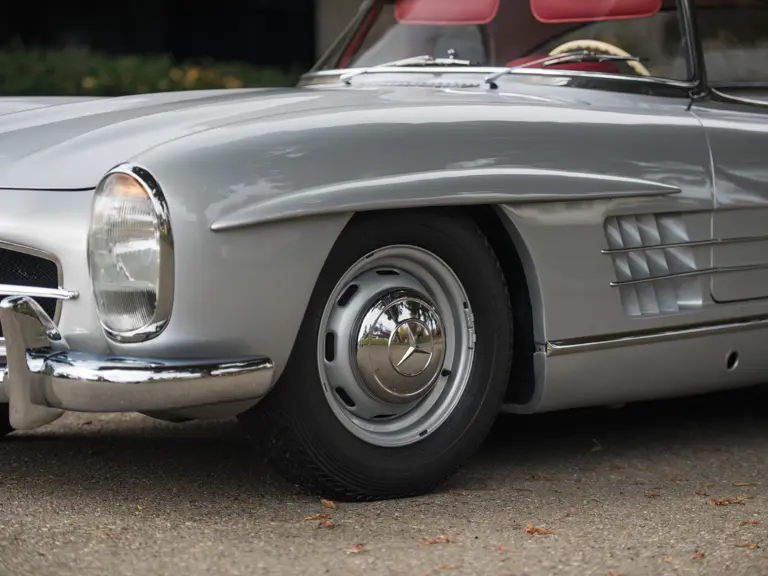

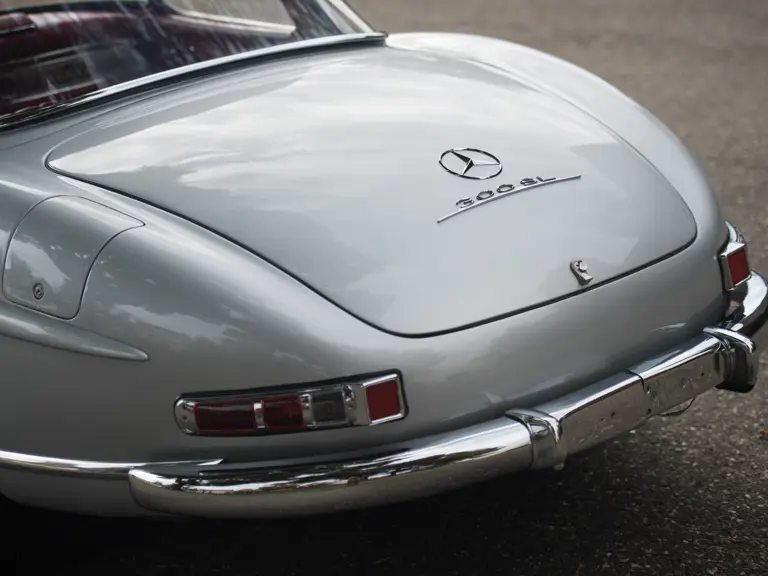
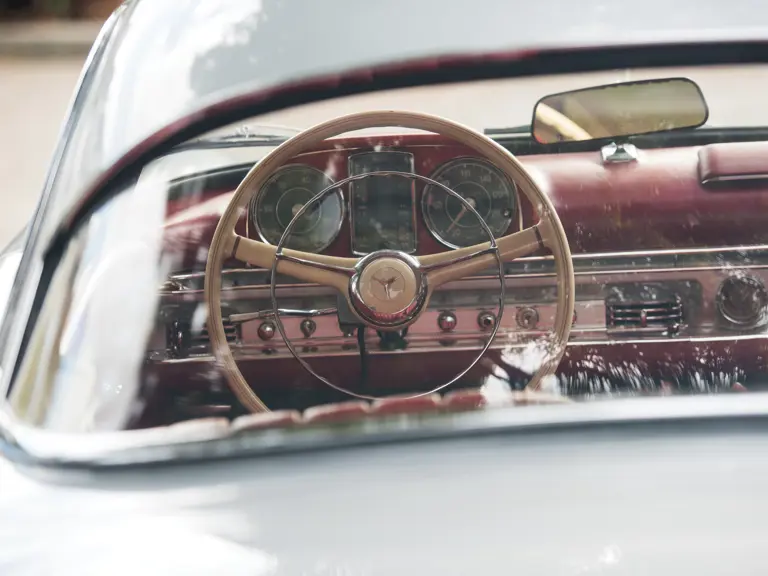
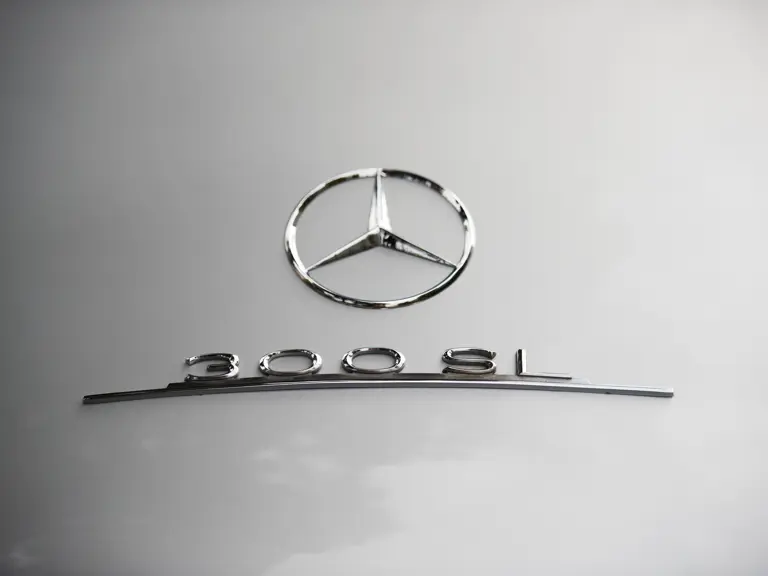
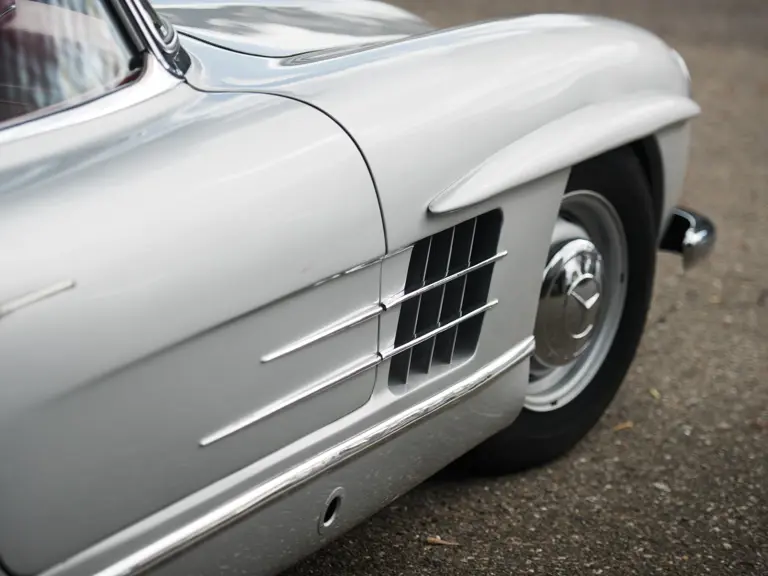
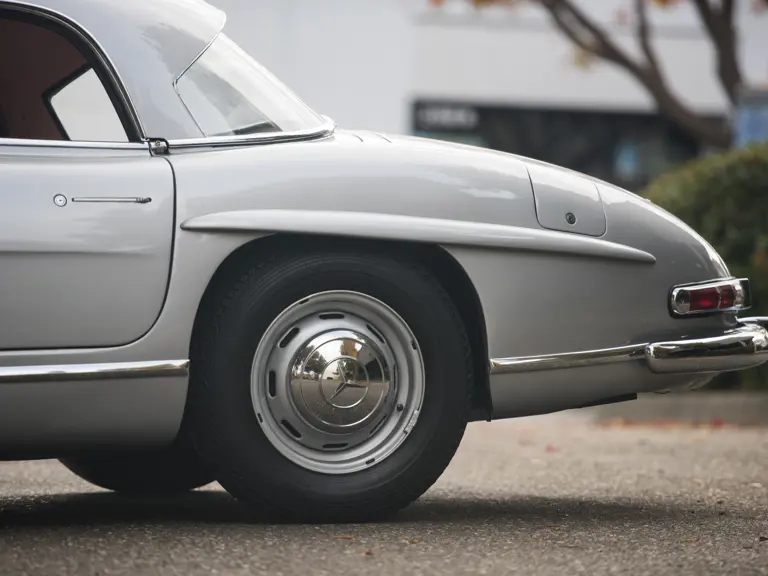

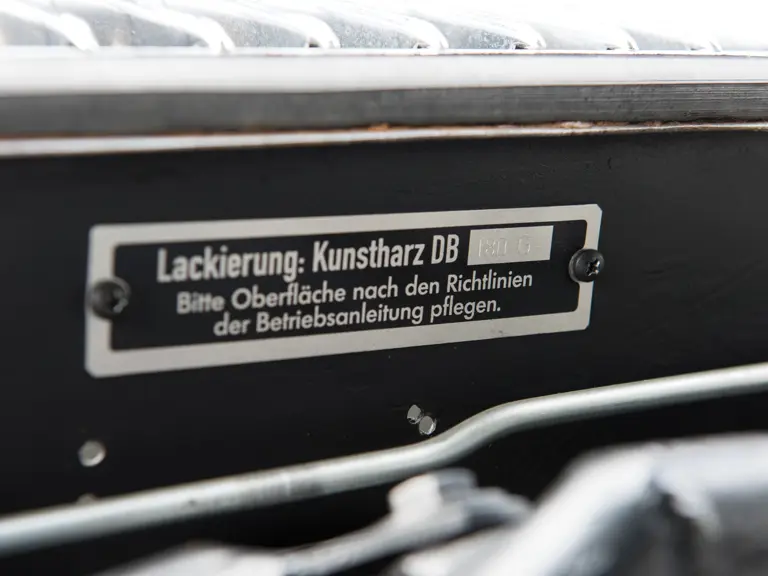
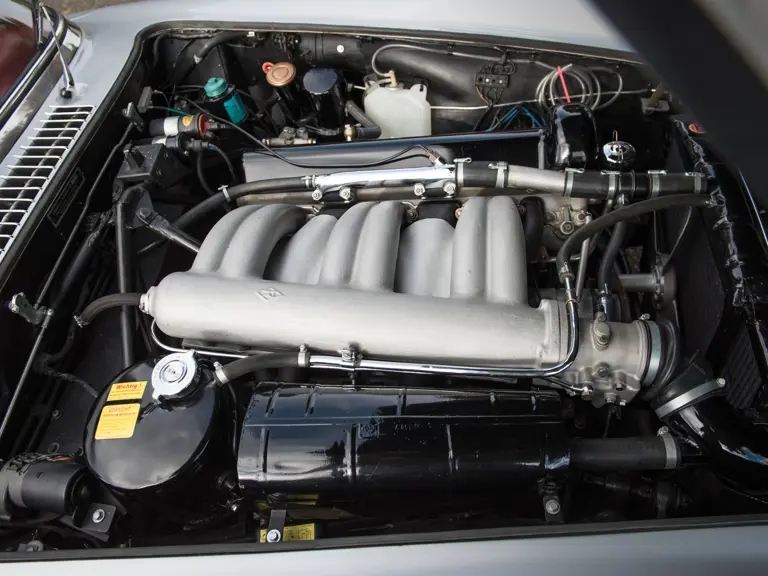
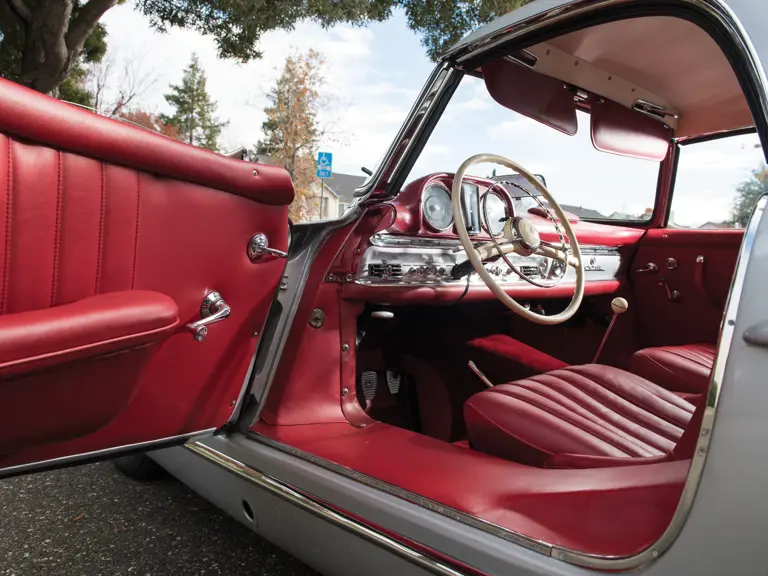
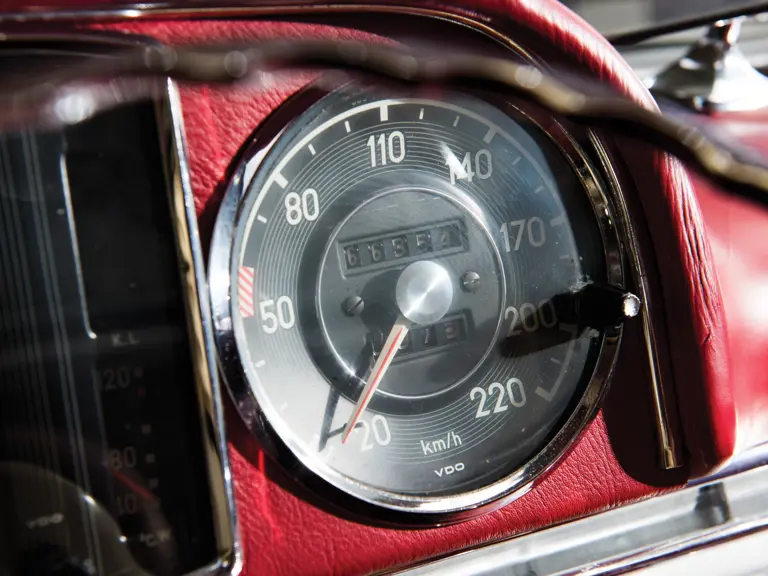


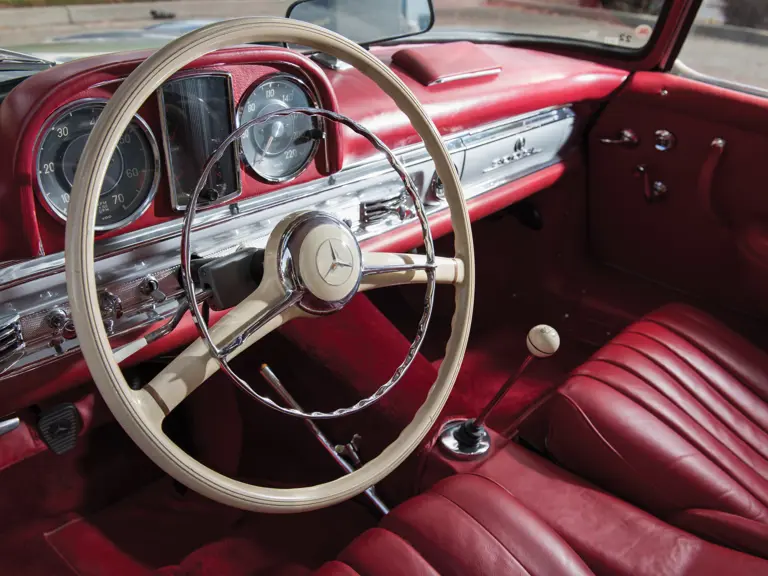
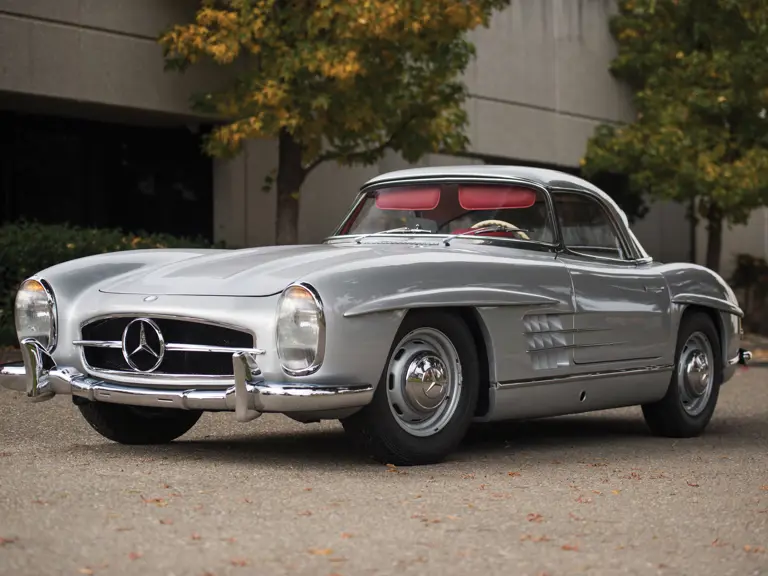
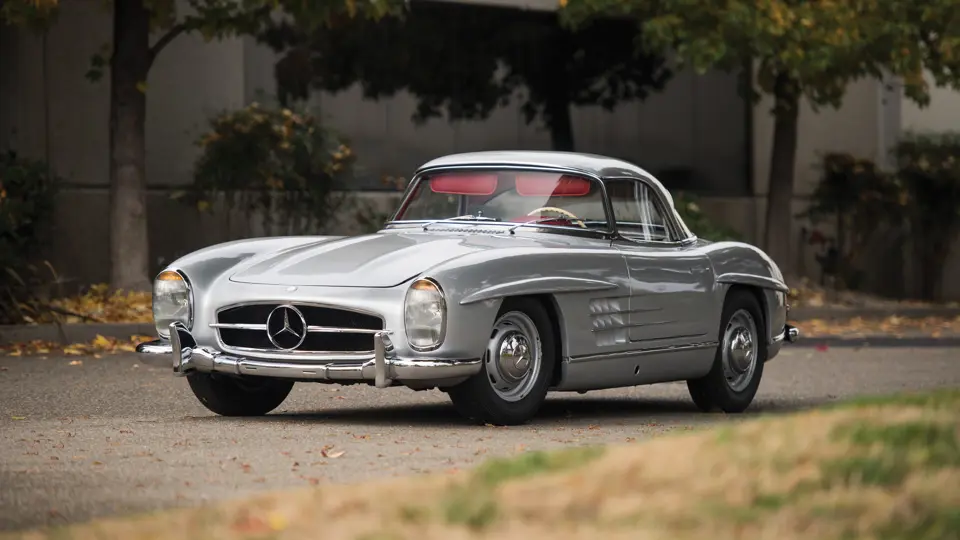
 | Phoenix, Arizona
| Phoenix, Arizona
